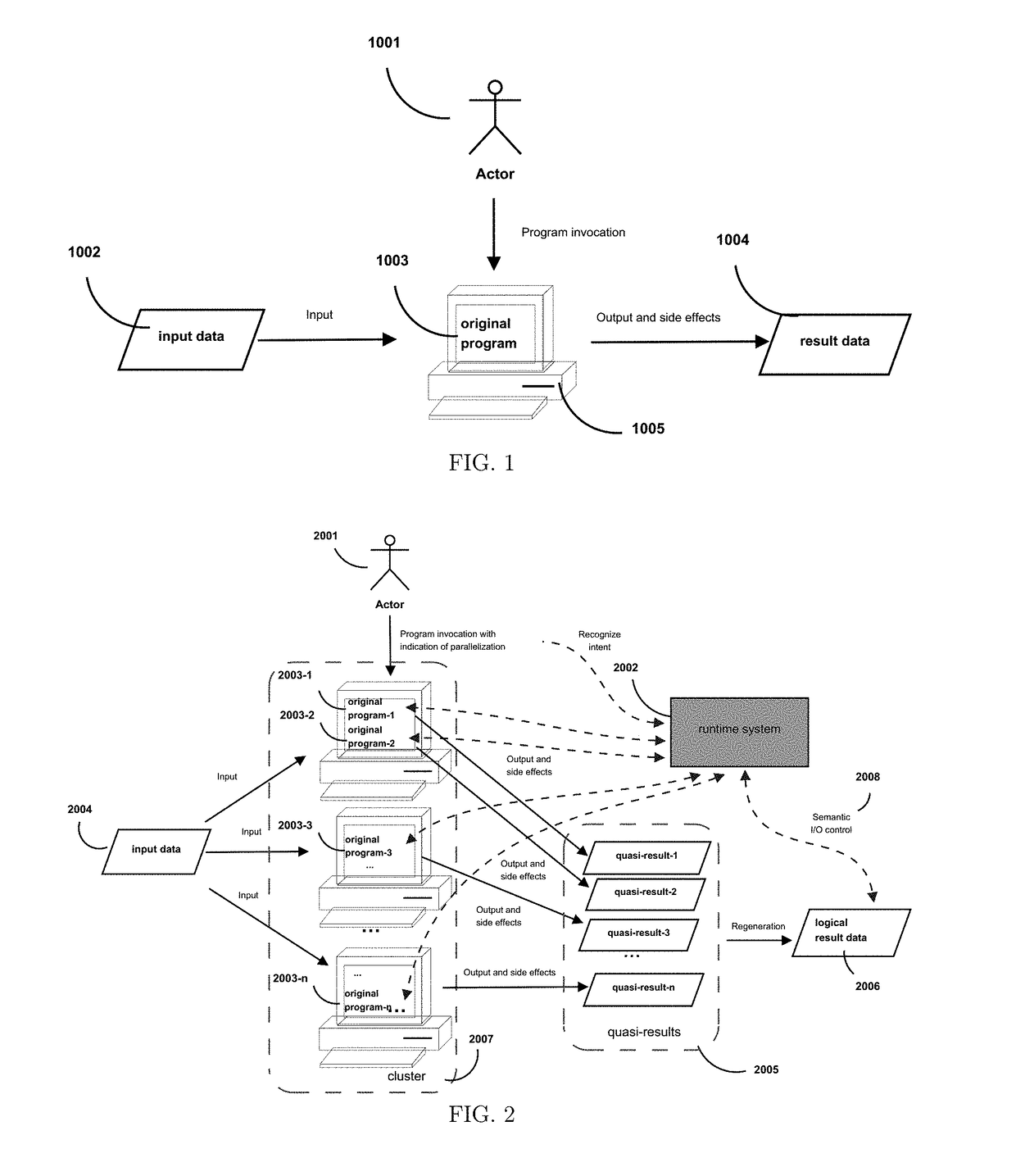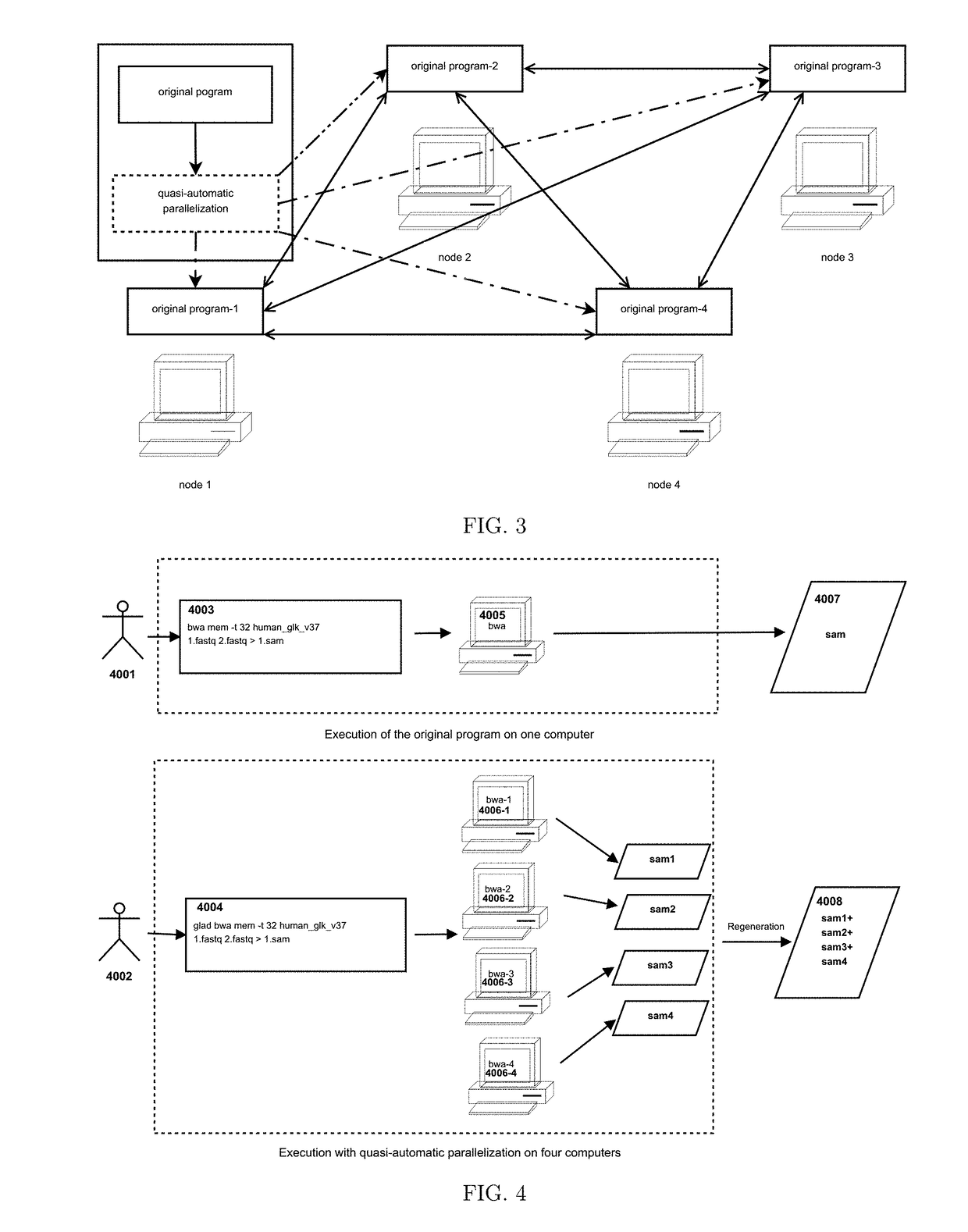Method for Quasi-automatic Parallelization of Application Programs
a parallelization and application program technology, applied in the field of distributed computing and distributed systems, can solve the problems of computing resources, difficult to design and implement parallel programs, and more difficult to apply parallelism in real-world data analysis systems, and achieve the effect of reducing the difficulty of parallelizing programs
- Summary
- Abstract
- Description
- Claims
- Application Information
AI Technical Summary
Benefits of technology
Problems solved by technology
Method used
Image
Examples
Embodiment Construction
[0028]FIG. 1 shows the normal execution of an original program 1003 on one computer 1005. An actor 1001, which is a user or a higher level program, invokes the original program 1003 through an invocation interface, such as a command line interface or application programming interface (API). The original program 1003 reads input data 1002, processes the data, and generates result data 1004 as program output or side effects. The original program 1003 is an executable, a defined library module, or other program entities with clearly defined functionality and an invocation interface usually accessible by human users or script programming. Although some forms, such as a Python or shell program, naturally include source code, it is not required because recompilation is not a necessary step in this invention. An example of the original program is a binary executable invoked by a command line with its native options and arguments. The computer 1005 is usually one computer system with multip...
PUM
 Login to View More
Login to View More Abstract
Description
Claims
Application Information
 Login to View More
Login to View More - R&D
- Intellectual Property
- Life Sciences
- Materials
- Tech Scout
- Unparalleled Data Quality
- Higher Quality Content
- 60% Fewer Hallucinations
Browse by: Latest US Patents, China's latest patents, Technical Efficacy Thesaurus, Application Domain, Technology Topic, Popular Technical Reports.
© 2025 PatSnap. All rights reserved.Legal|Privacy policy|Modern Slavery Act Transparency Statement|Sitemap|About US| Contact US: help@patsnap.com



